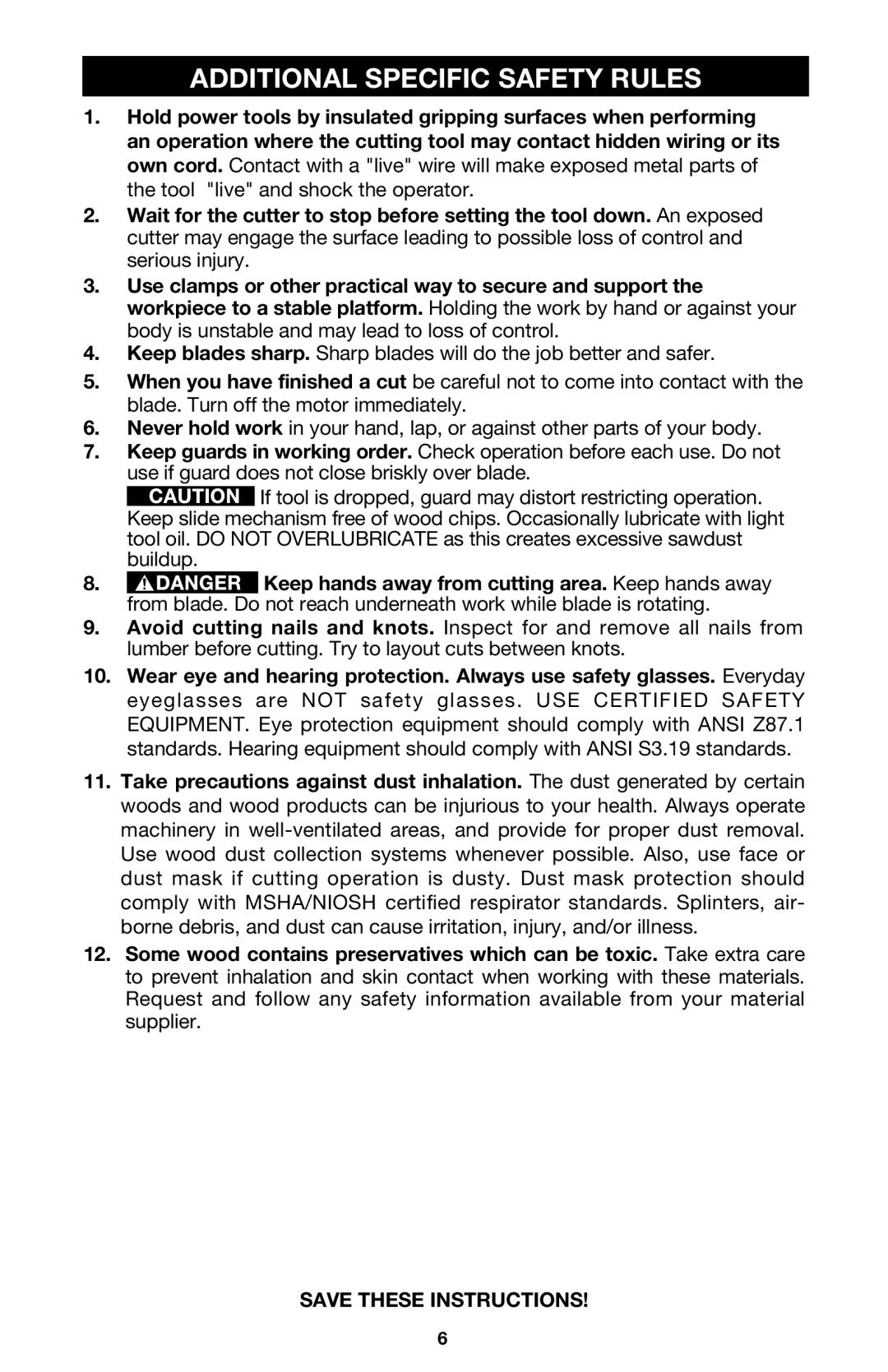ADDITIONAL SPECIFIC SAFETY RULES
1.Hold power tools by insulated gripping surfaces when performing an operation where the cutting tool may contact hidden wiring or its own cord. Contact with a "live" wire will make exposed metal parts of the tool "live" and shock the operator.
2.Wait for the cutter to stop before setting the tool down. An exposed cutter may engage the surface leading to possible loss of control and serious injury.
3.Use clamps or other practical way to secure and support the workpiece to a stable platform. Holding the work by hand or against your body is unstable and may lead to loss of control.
4.Keep blades sharp. Sharp blades will do the job better and safer.
5.When you have finished a cut be careful not to come into contact with the blade. Turn off the motor immediately.
6.Never hold work in your hand, lap, or against other parts of your body.
7.Keep guards in working order. Check operation before each use. Do not use if guard does not close briskly over blade.
![]() If tool is dropped, guard may distort restricting operation. Keep slide mechanism free of wood chips. Occasionally lubricate with light tool oil. DO NOT OVERLUBRICATE as this creates excessive sawdust buildup.
If tool is dropped, guard may distort restricting operation. Keep slide mechanism free of wood chips. Occasionally lubricate with light tool oil. DO NOT OVERLUBRICATE as this creates excessive sawdust buildup.
8.![]() Keep hands away from cutting area. Keep hands away from blade. Do not reach underneath work while blade is rotating.
Keep hands away from cutting area. Keep hands away from blade. Do not reach underneath work while blade is rotating.
9.Avoid cutting nails and knots. Inspect for and remove all nails from lumber before cutting. Try to layout cuts between knots.
10.Wear eye and hearing protection. Always use safety glasses. Everyday eyeglasses are NOT safety glasses. USE CERTIFIED SAFETY EQUIPMENT. Eye protection equipment should comply with ANSI Z87.1 standards. Hearing equipment should comply with ANSI S3.19 standards.
11.Take precautions against dust inhalation. The dust generated by certain woods and wood products can be injurious to your health. Always operate machinery in
12.Some wood contains preservatives which can be toxic. Take extra care to prevent inhalation and skin contact when working with these materials. Request and follow any safety information available from your material supplier.
SAVE THESE INSTRUCTIONS!
6
